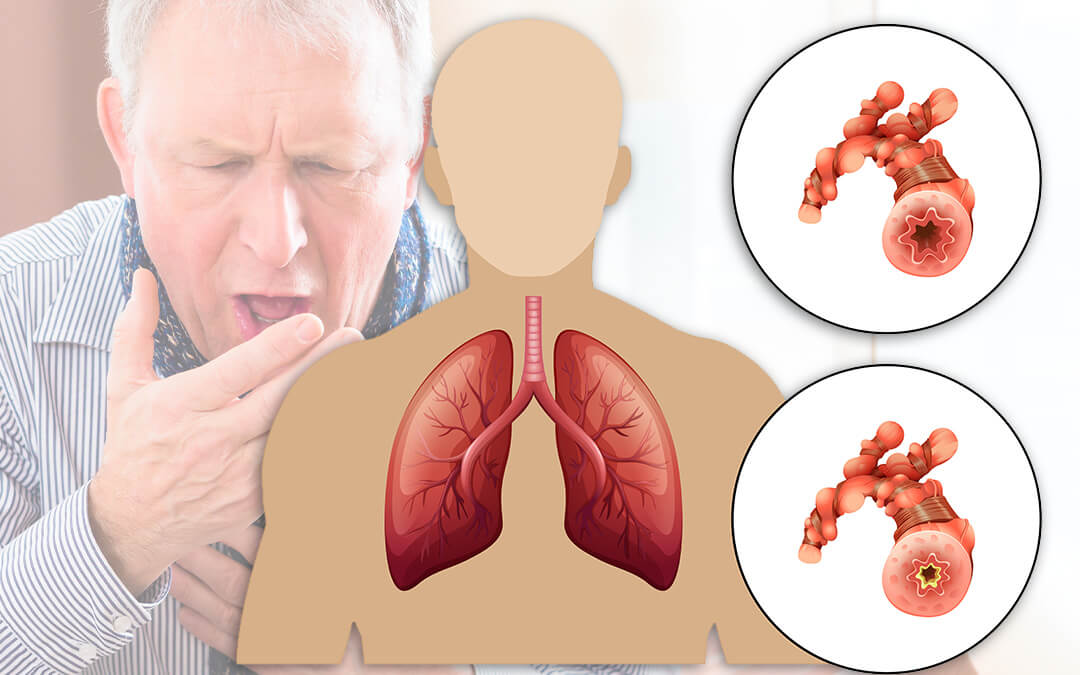COPD
Understanding COPD: Causes, Symptoms, and Management
Chronic Obstructive Pulmonary Disease (COPD) is a progressive lung disease that affects millions of people worldwide. It is a term used to describe a group of lung conditions, including chronic bronchitis and emphysema, characterized by obstructed airflow to the lungs. COPD is a leading cause of morbidity and mortality globally, and its prevalence is steadily increasing. In this article, we will explore the causes, symptoms, diagnosis, and management of COPD.
Causes:
The primary cause of COPD is long-term exposure to irritants that damage the lungs and airways. Cigarette smoke is the most common irritant, responsible for around 90% of COPD cases. Other factors that can contribute to the development of COPD include exposure to secondhand smoke, occupational dust and chemicals, indoor and outdoor air pollution, and genetic factors.
Symptoms:
The symptoms of COPD usually develop gradually and worsen over time. Common symptoms include:
Shortness of breath (dyspnea): Difficulty breathing, especially during physical activity, is one of the hallmark symptoms of COPD.
Chronic cough: A persistent cough that may produce mucus (sputum) is common in COPD.
Wheezing: A whistling or squeaky sound when breathing, particularly during exhalation.
Chest tightness: A sensation of pressure or heaviness in the chest.
Frequent respiratory infections: COPD can make individuals more susceptible to respiratory infections such as pneumonia and bronchitis.
Diagnosis:
Diagnosing COPD typically involves a combination of medical history, physical examination, lung function tests, and imaging studies. Common tests used to diagnose COPD include spirometry, which measures how much air you can exhale and how quickly, and chest X-rays or CT scans to assess lung damage and rule out other conditions.
Management:
While COPD is a progressive disease with no cure, its symptoms can be managed effectively with proper treatment and lifestyle changes. Treatment strategies for COPD may include:
Smoking cessation: Quitting smoking is the single most important step in managing COPD and slowing its progression.
Medications: Bronchodilators and inhaled corticosteroids are commonly prescribed to help relax the muscles around the airways and reduce inflammation.
Pulmonary rehabilitation: A structured program of exercise, education, and support can improve symptoms and quality of life for individuals with COPD.
Oxygen therapy: Supplemental oxygen may be prescribed for individuals with severe COPD to improve oxygen levels in the blood.
Surgery: In some cases, surgical interventions such as lung volume reduction surgery or lung transplant may be considered for individuals with advanced COPD.
Prevention:
Preventing COPD involves minimizing exposure to risk factors such as cigarette smoke, air pollution, and occupational hazards. For individuals who already have COPD, early diagnosis and prompt initiation of treatment can help slow disease progression and improve quality of life.
In conclusion, COPD is a chronic lung disease characterized by airflow obstruction and respiratory symptoms. While there is no cure for COPD, proper management can help control symptoms, improve quality of life, and reduce the risk of complications. By understanding the causes, symptoms, and treatment options for COPD, individuals can take proactive steps to maintain lung health and overall well-being.


